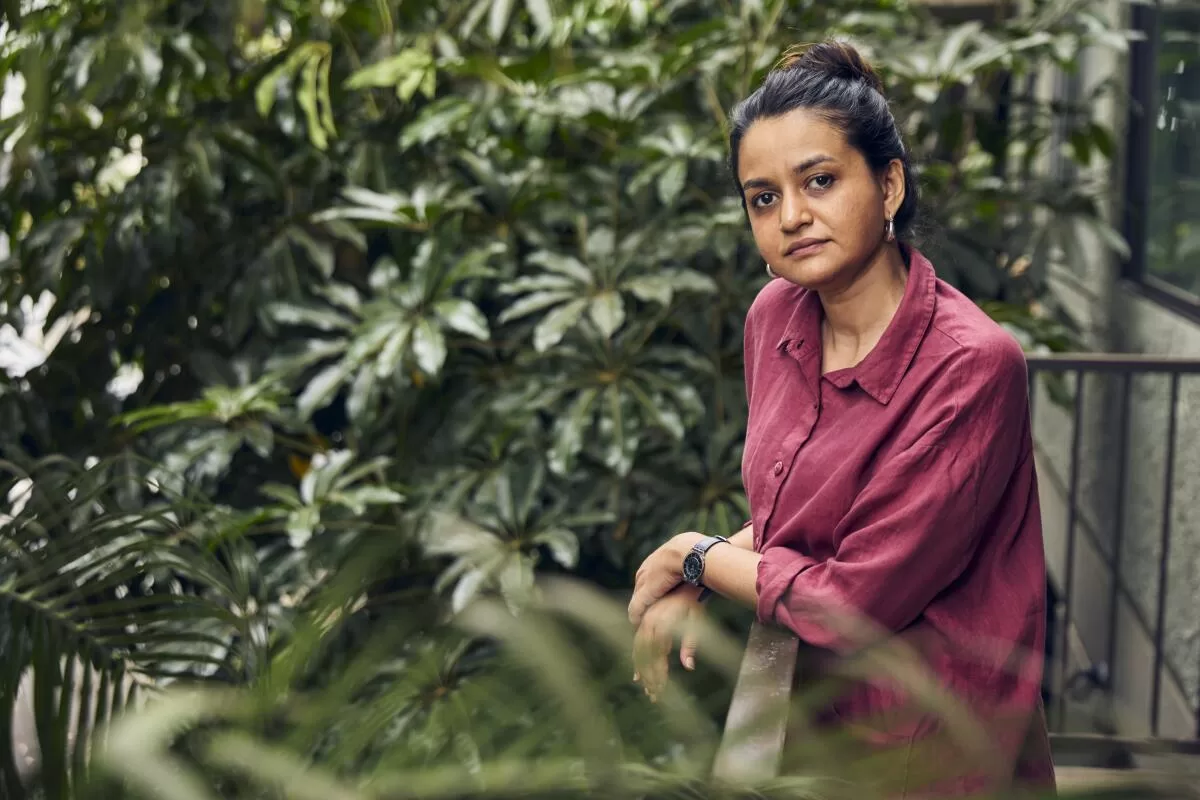Hello! I’m Mark Olsen. Welcome to another edition of your regular field guide to a world of Only Good Movies.
Among the new releases this week is Payal Kapadia’s “All We Imagine as Light.” The film won the second-place Grand Prix prize when it premiered earlier this year at the Cannes Film Festival and generated a lot of conversation when it was overlooked as India’s submission for the Academy Award for international feature.
The movie tells the story of the friendship between three women in Mumbai. In a recent interview with Glenn Whipp, Kapadia addressed the film’s portrayal of the city: “Mumbai is a perilous city — even its geography is in a state of flux. Historically, it was just seven islands that was bridged by the British East India Company to make it a port because they lost their port in Surat. So the whole premise of the city comes from a super-capitalistic, colonialist past. And the city remains in a state of flux. Developers are grabbing areas where people have lived for years. Women move there to feel more liberated, but there’s an impermanence as well.”

Payal Kapadia is the director of “All We Imagine as Light,” a new release.
(JSquared Photography)
Reviewing for The Times, Joshua Rothkopf called the film “a miraculously subtle piece of work,” paying special attention to Kapadia’s range and command of varying emotional tones. “It would be a shame to rob a reader of the experience of watching Kapadia shed her film’s skin, reinventing in an entirely new register. It’s as if the director herself has run into an existential choice: to show women in the fullness of their complications, frustrated and abandoned? Or to give them an escape? Fittingly, for a filmmaker who already seems major, her answer is simple. We need both.”
‘There Will Be Blood’ in 35mm
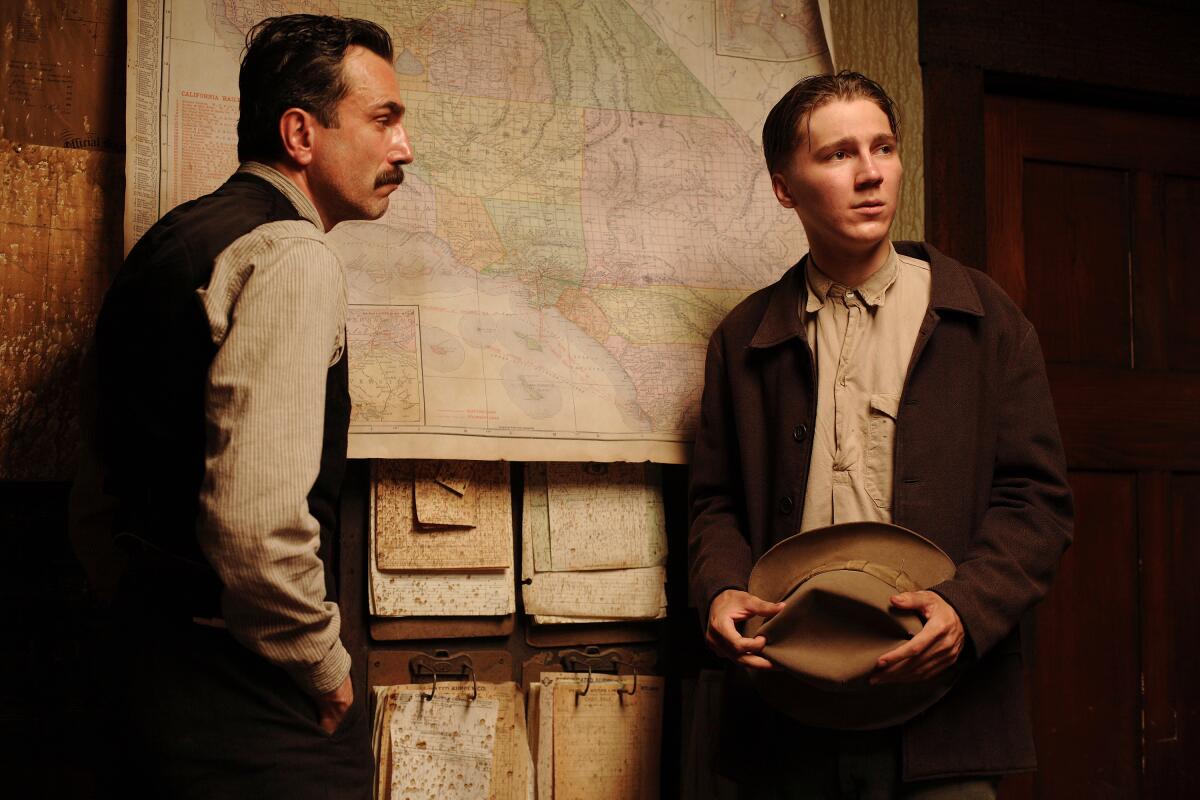
Daniel Day-Lewis, left, and Paul Dano in the Paul Thomas Anderson-directed “There Will Be Blood,” which will screen Sunday at the David Geffen Theater.
(Francois Duhamel / Paramount Vantage)
On Sunday, Paul Thomas Anderson’s 2007 “There Will Be Blood,” starring Daniel Day-Lewis, will screen in 35mm in the Academy Museum’s David Geffen Theater. Those words alone should have at least some folks clicking the “purchase” button for tickets, as the opportunity to really take in the film’s scale and scope should turn out the PTA faithful in full force. Other should take notice as well.
The screening is part of a series of films — also including Martin Scorsese’s “Killers of the Flower Moon,” John Ford’s “Stagecoach,” Delmer Daves’ “Broken Arrow,” Gore Verbinski’s “The Lone Ranger” and Sam Peckinpah’s “The Wild Bunch,” among others — guest-programmed by Adam Piron that recontextualize the notion of the western.
In an email, Piron, director of Sundance Institute’s Indigenous Program, explained his curatorial concept after he was approached by the Academy Museum’s director of film programs K.J. Relth-Miller. “An idea that I’ve wanted to explore for some time is specifically looking at the western from what I believe has always been the central character of the genre itself, which I would say is the landscape,” Piron wrote. “You see its arc in some form or another in every film that falls under the western umbrella.”
Piron added, “Thematically, I wanted to take a multi-decade look at westerns that have been Oscar nominees and filter them through some common themes that run through the genre, specifically Indigenous peoples’ rightful claim to their homelands, the philosophical wrestling that the genre does in questioning what laws mean on this land, and the human and environmental tragedies that arise from exploiting the landscape itself.
“I’m hoping that the Academy Museum’s audiences can see these films with a renewed appreciation for their creative depths and how they can take on new meanings as our culture continues to change, and to some extent see how Native American audiences might see the western through their point of view as it relates to understanding the land itself as its own presence.”
An adaptation of Upton Sinclair’ 1927 novel “Oil!,” “There Will Be Blood” stars Daniel Day-Lewis as the ruthlessly ambitious Daniel Plainview, who makes his fortune as an oilman in the early 20th century.
In his original review of the film, Kenneth Turan wrote that the collaboration between Anderson and Day-Lewis “might be the most incendiary combination since the Molotov cocktail. Though it can be over the top and excessive, this morality play set in the early days of California’s oil boom also creates considerable heat and light and does some serious aesthetic damage.”
Turan added, “Though he starts out almost likable, as Plainview stores up hatreds and animosities over the years, his coldness and arrogance become more visible and his indifference to and contempt for humanity grows exponentially. This, ‘There Will Be Blood’ is in part saying, is what we do to ourselves when, as either business or religious leaders, we deny the humanity in us and overvalue wealth and power.”
‘The Misfits’
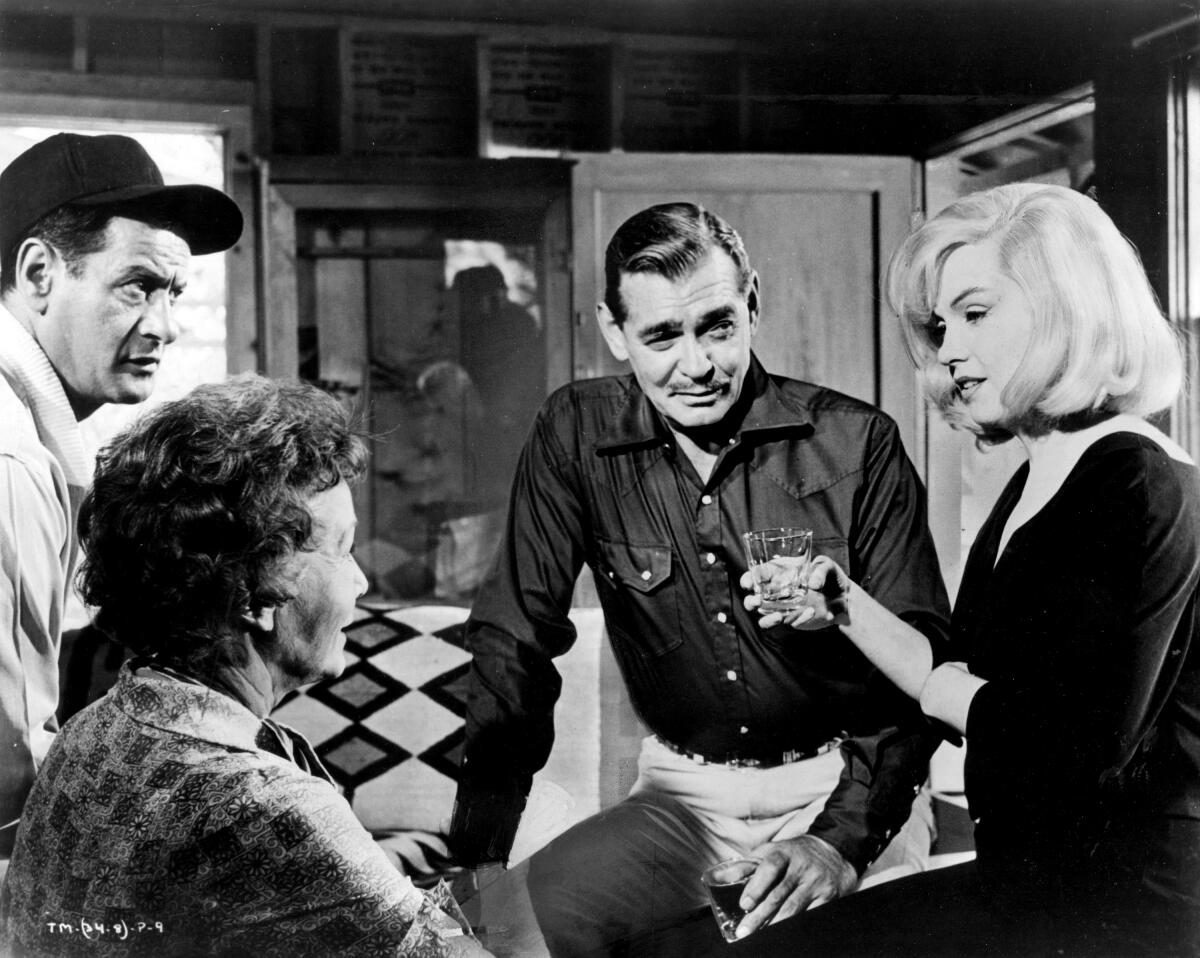
“The Misfits,” starring Clark Gable and Marilyn Monroe, will be presented Saturday by Vidiots.
(United Artists)
On Saturday night, Vidiots will host a screening of Gia Coppola’s new “The Last Showgirl” with Coppola and the film’s star Pamela Anderson present for a Q&A. Then Anderson will also appear to introduce a screening of John Huston’s 1961 “The Misfits.”
Anderson selected the film herself, and it is an astonishing companion to “The Last Showgirl.” If Coppola and Anderson’s film is a delicate meditation on the end of something left unspoken, then so is “The Misfits.” The last film completed by Marilyn Monroe, the film was also the last for co-star Clark Gable, who died before it was released. The film’s screenplay was written by Arthur Miller, married to Monroe during production, but the two were soon divorced.
Both onscreen and off, “The Misfits” is about a woman in transition, trying to find herself. Which makes Anderson’s choice to show and introduce it all the more remarkable, bringing out resonances in “The Last Showgirl” and parallels to her own career.
Writing about the film for The Times in February 1961, Philip K. Scheuer said, “Only time will give ‘The Misfits’ a proper evaluation; it is one of the strangest pictures ever made, and the circumstances under which it was made were equally strange. Today’s spectator can hardly watch it without being conscious of the true-life (and death) overtones that attended its creation, for the screenplay is a first by playwright Arthur Miller, its female star is Marilyn Monroe, the woman who was his wife during its gestation period, and the male lead is Clark Gable, whose passing this arduous role may or may not have hastened. In a sense, there may be too much audience participation.”
In a separate story published in October 1960, Scheuer spoke to Miller and Montgomery Clift about Paula Strasberg, Monroe’s acting coach. As Clift said, “If the public and the film industry ever permits her to shed her identity as a swivel-hipped, blond sexpot, she has a better-than-even chance of becoming one of the screen’s most accomplished actress! Her professional ‘image’ was badly bungled by her discoverers in their haste to catapult her to stardom. … I think they were hypnotized by the breathy quality of Marilyn’s voice, by her body and her beauty. So they proceeded to turn her into a delicate clock movement. They were more concerned with the way the pendulum swung than with the intricate things below the surface.”
Points of interest
‘Pat Garrett and Billy the Kid’ and ‘Cisco Pike’
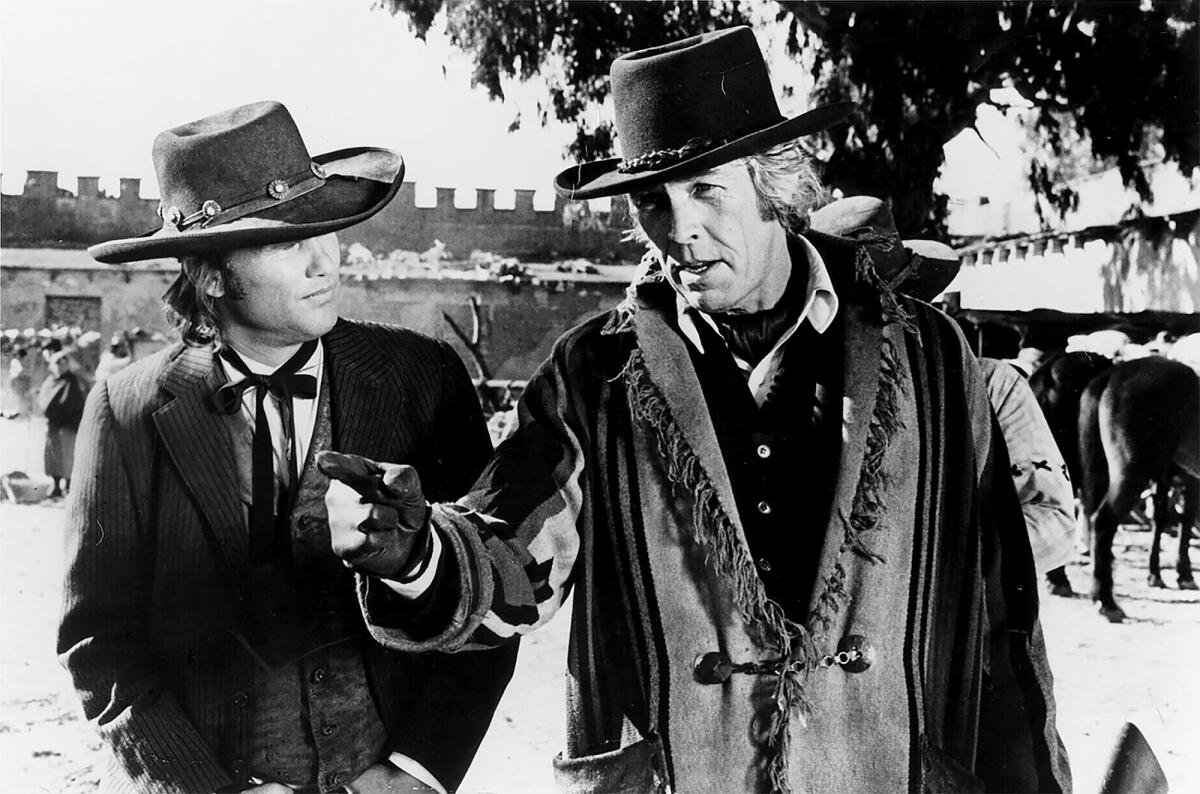
“Pat Garrett and Billy the Kid,” starring Kris Kristofferson, left, and James Colurn, will be shown at the New Beverly as part of a double-feature tribute to Kristofferson, who died in September.
(MGM)
On Friday, Saturday and Sunday, the New Beverly will be showing a double-feature in tribute to Kris Kristofferson with Sam Peckinpah’s 1973 “Pat Garrett and Billy the Kid” and B.L Norton’s 1971 “Cisco Pike.”
Peckinpah’s “Pat Garrett,” with a screenplay by Rudy Wurlitzer (whom we mentioned here just last week in relation to his 1987 film “Candy Mountain”), has had a curious release over the years. A recent Criterion Collection set included three versions of the film. (Going by the running time, the New Beverly 35mm presentation will be of the 1973 theatrical cut.) In telling the story of how two old friends (Kristofferson and James Coburn) find themselves as rivals on opposite sides of the law, Peckinpah made one of his most emotional and heartfelt films.
As Kevin Thomas wrote in his original review, “Never has Peckinpah made his recurrent preoccupation, the death of the Old West, suggest so strongly that it also signifies the beginning of the end of freedom in America — and therefore its demise too. ‘Pat Garrett and Billy the Kid’ is not against law and order but quietly asks whom it serves. … Beyond evoking the passing of the old order and questioning the quality of the new one, Peckinpah asks us to ponder what civilization is itself.”
In an epic dispatch from the film’s production in Mexico, The Times’ Robert Hilburn captured the scene as Bob Dylan was on set to perform a small role (he also composed the film’s score). As Wurlitzer said of Peckinpah, then in his heyday, “All of his energy, his point of view is essentially the vision of a pioneer. His anger and his rage are totally necessary parts of his work. He’s dogmatic, emotional. The set is a kingdom and he’s the king.”
“Cisco Pike,” meanwhile, stars Kristofferson as a down-on-his-luck rock ‘n’ roller who has turned to drug dealing. With supporting performances from Gene Hackman, Karen Black, Doug Sahm and Harry Dean Stanton, the film is a time capsule of early 1970s Los Angeles. As Sean Howe wrote about the film in 2006, “It belongs in a pantheon of films — along with ‘Sunset Boulevard,’ ‘Mi Vida Loca’ and ‘Valley Girl’ — that have managed to capture in-the-moment pieces of the L.A. landscape that are no more.”
‘They Came Together’
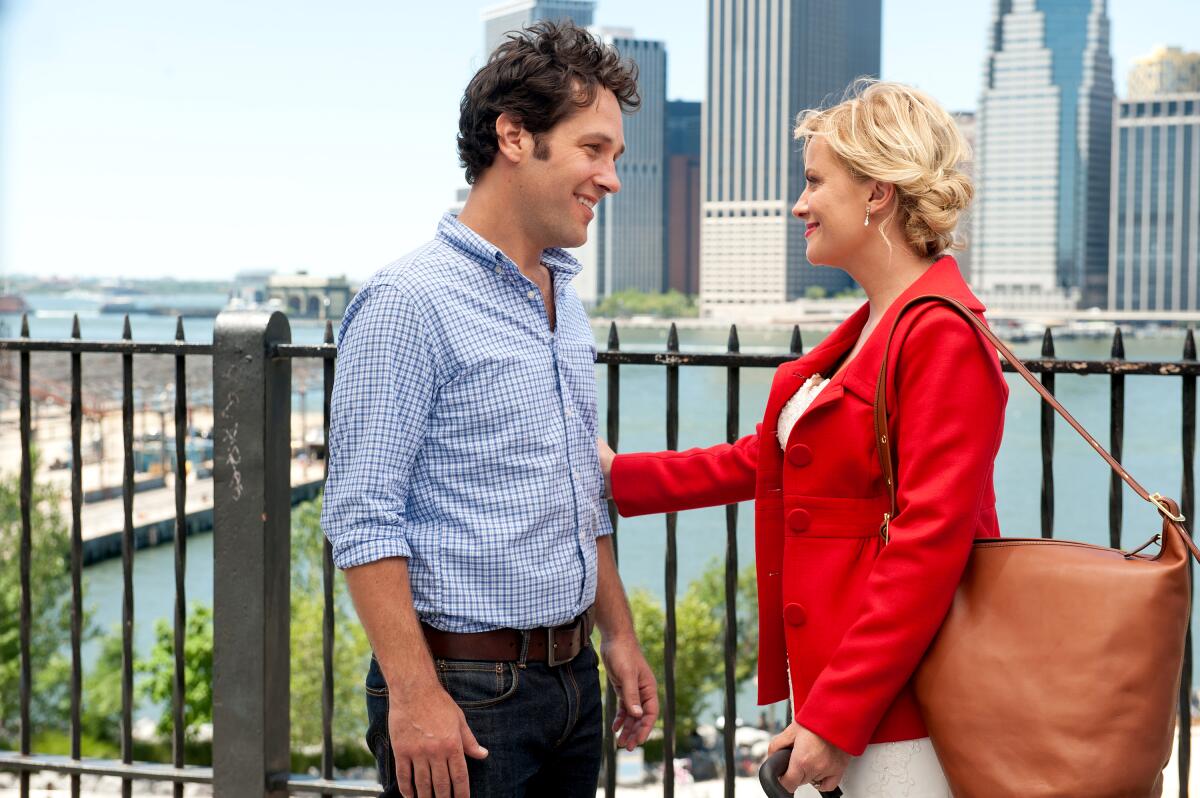
Vidiots will host two screenings of “They Came Together,” the rom-com parody starring Paul Rudd and Amy Poehler, to mark the movie’s 10th anniversary.
(JoJo Whilden / Lionsgate)
For the 10th anniversary of “They Came Together,” a parody of romantic comedies directed by David Wain, Vidiots will be hosting two showings on Tuesday with Wain and cast members Amy Poehler, Cobie Smulders, Melanie Lynskey, Ed Helms and others in attendance.
The film was the follow-up to Wain and co-writer Michael Showalter’s “Wet Hot American Summer,” made with many of the same cast members who, in the years between, had become considerably more famous. In an interview in Park City when the film first premiered at Sundance, Wain said, “It does create a challenge for us to not mislead an audience into thinking it’s a quote-unquote real romantic comedy. Paul and Amy easily could star in a legitimate romantic comedy.”
Wain added, “Ultimately the goal is not to make a statement about genre or anything like that. The goal is to entertain and make people laugh and tell a fun story. And the guiding principle to that end was that we really do on some level follow and get involved in the relationship. And I think the way you do that is casting Paul Rudd and Amy Poehler. For my money it really does both, it undercuts it while also allowing you to root for them to get together.”
Andrea Arnold’s ‘Bird’
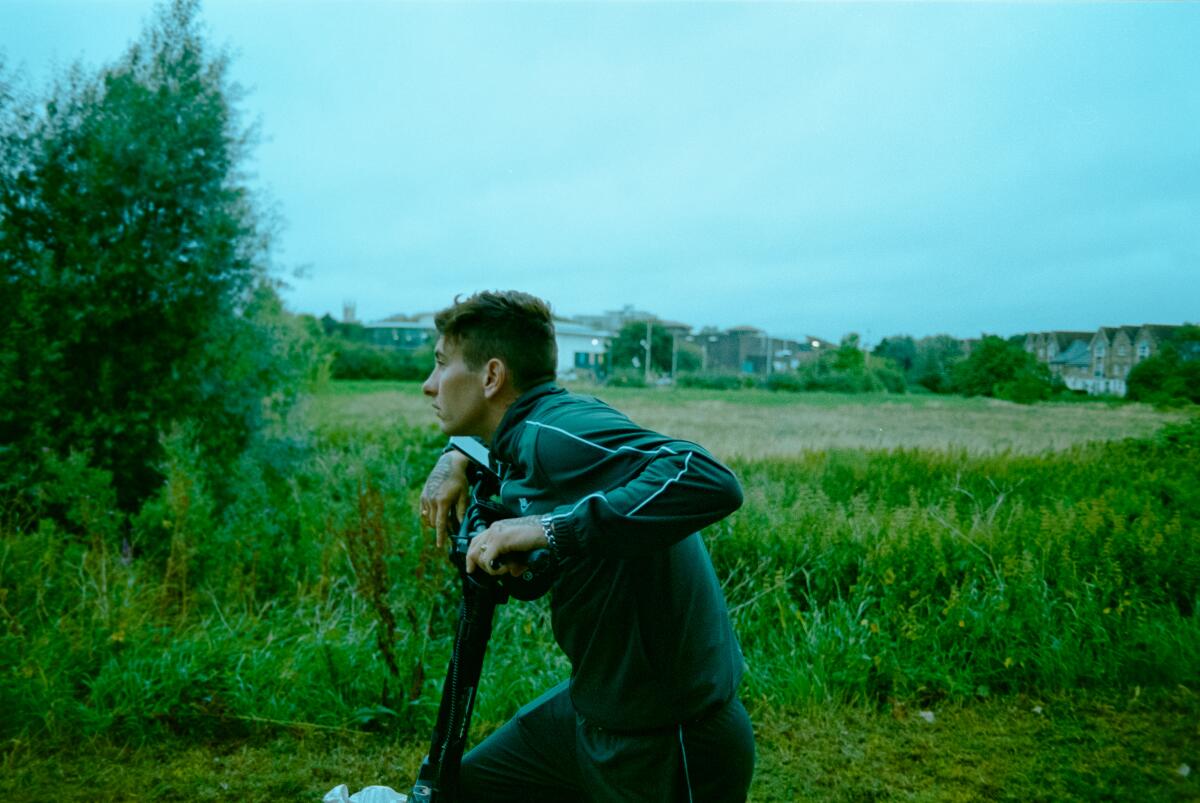
Barry Keoghan in “Bird.”
(Robbie Ryan / Mubi)
Filmmaker Andrea Arnold returns with “Bird,” her first fiction feature since 2016’s “American Honey.” The new film premiered earlier this year at the Cannes Film Festival and was recently nominated for two European Film Awards and six British Independent Film Awards. In “Bird,” a 12-year-old girl, Bailey (Nykiya Adams), lives with her immature father, Bug (Barry Keoghan), in a hardscrabble apartment as he makes plans to marry his current girlfriend (Frankie Box). At the same time, Bailey strikes up a friendship with a mysterious wanderer named Bird (Franz Rogowski). Bailey finds herself torn between affection for her father and a desire for a more stable life.
In his review of the film, Robert Abele wrote, “Arnold has made the lingering beauty and vulnerability of the animal world a hallmark of her tales and ‘Bird’ is no exception … It’s the humans, though, that you’ll remember from the ground up: Adams’ camera-friendly energy and hard-won serenity; Keoghan’s cockeyed warmth, just this side of menacing; Rogowski’s strange, commanding woundedness. If it’s too much to ask of Arnold that her bid for heightened naturalism make a ton of sense, ‘Bird’ at least maintains a heartbeat of ache and affection for youth in all its rudeness, revealing a filmmaker who isn’t afraid of losing her claws if she traffics in the thing with feathers.”
